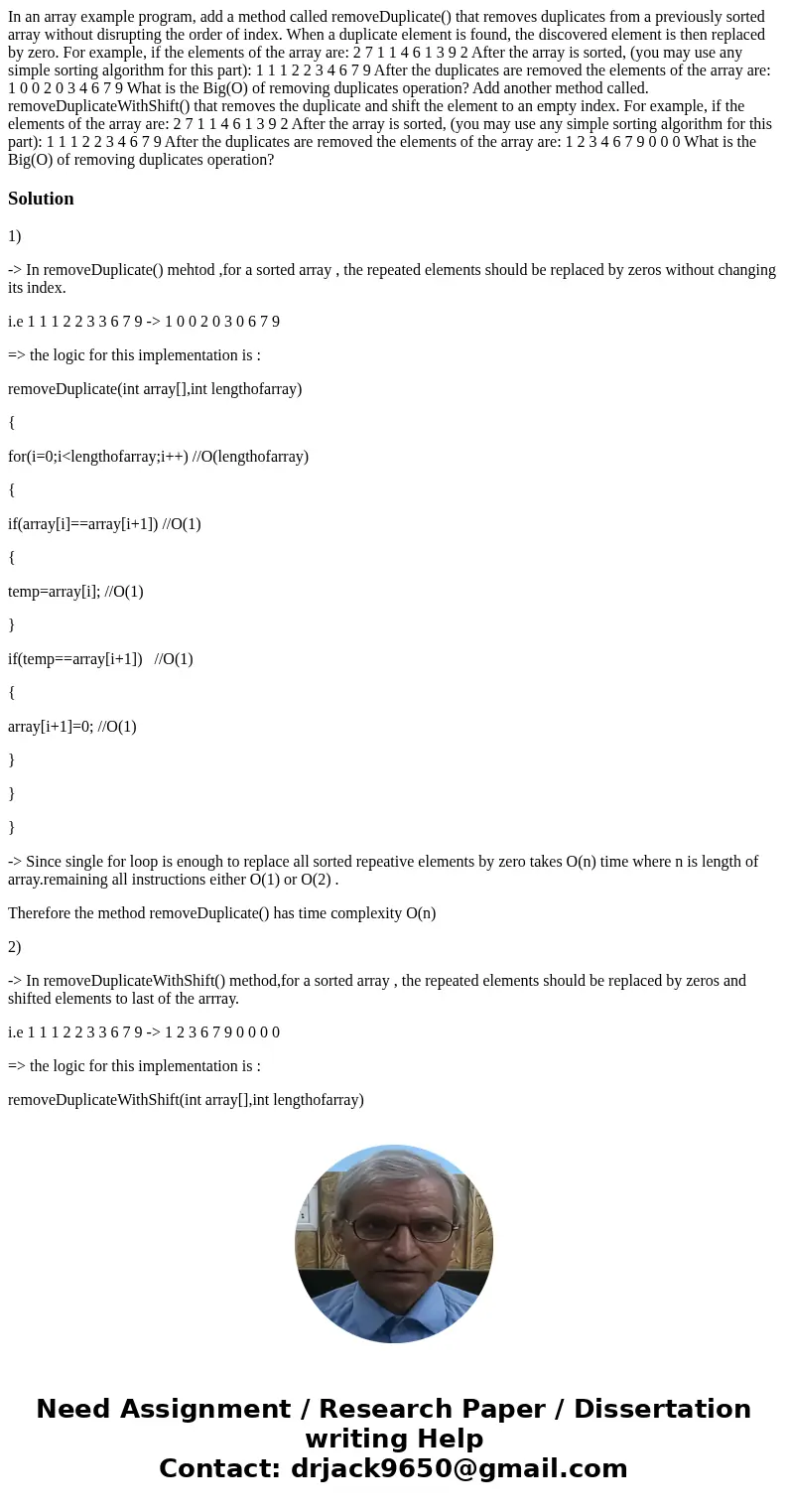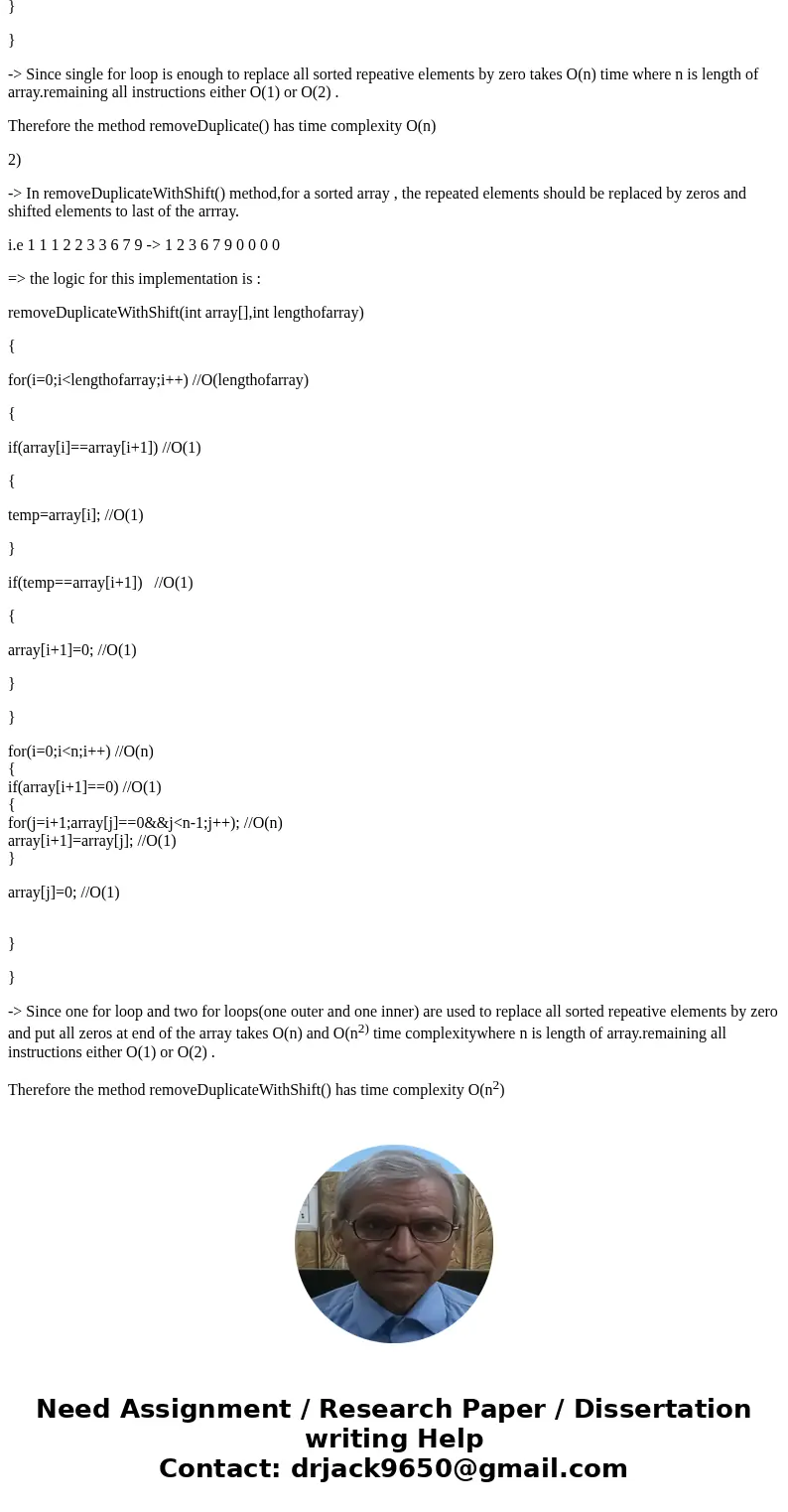In an array example program add a method called removeDuplic
Solution
1)
-> In removeDuplicate() mehtod ,for a sorted array , the repeated elements should be replaced by zeros without changing its index.
i.e 1 1 1 2 2 3 3 6 7 9 -> 1 0 0 2 0 3 0 6 7 9
=> the logic for this implementation is :
removeDuplicate(int array[],int lengthofarray)
{
for(i=0;i<lengthofarray;i++) //O(lengthofarray)
{
if(array[i]==array[i+1]) //O(1)
{
temp=array[i]; //O(1)
}
if(temp==array[i+1]) //O(1)
{
array[i+1]=0; //O(1)
}
}
}
-> Since single for loop is enough to replace all sorted repeative elements by zero takes O(n) time where n is length of array.remaining all instructions either O(1) or O(2) .
Therefore the method removeDuplicate() has time complexity O(n)
2)
-> In removeDuplicateWithShift() method,for a sorted array , the repeated elements should be replaced by zeros and shifted elements to last of the arrray.
i.e 1 1 1 2 2 3 3 6 7 9 -> 1 2 3 6 7 9 0 0 0 0
=> the logic for this implementation is :
removeDuplicateWithShift(int array[],int lengthofarray)
{
for(i=0;i<lengthofarray;i++) //O(lengthofarray)
{
if(array[i]==array[i+1]) //O(1)
{
temp=array[i]; //O(1)
}
if(temp==array[i+1]) //O(1)
{
array[i+1]=0; //O(1)
}
}
for(i=0;i<n;i++) //O(n)
{
if(array[i+1]==0) //O(1)
{
for(j=i+1;array[j]==0&&j<n-1;j++); //O(n)
array[i+1]=array[j]; //O(1)
}
array[j]=0; //O(1)
}
}
-> Since one for loop and two for loops(one outer and one inner) are used to replace all sorted repeative elements by zero and put all zeros at end of the array takes O(n) and O(n2) time complexitywhere n is length of array.remaining all instructions either O(1) or O(2) .
Therefore the method removeDuplicateWithShift() has time complexity O(n2)


 Homework Sourse
Homework Sourse